Maintaining your lawn mower is essential for keeping your yard well-groomed, and one common issue you might face is a damaged or flat tire. Whether it’s from wear and tear or running over sharp debris, a faulty lawn mower tire can hinder your mowing efforts. Fortunately, fixing or replacing a lawn mower tire is a straightforward process that can save you time and money. In this guide, we’ll walk you through how to fix lawn mower tire.
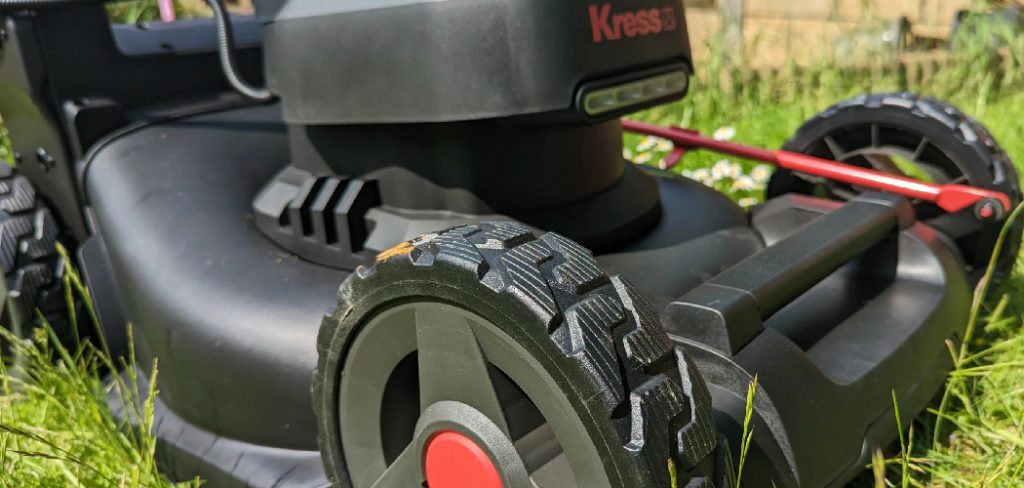
Why Fixing Lawn Mower Tires is Essential
Fixing lawn mower tires promptly is crucial for several reasons. Firstly, damaged or flat tires can make maneuvering your mower difficult, leading to uneven cutting patterns and potentially damaging your lawn. Secondly, operating a mower with faulty tires can strain other components, such as the axle or the mower deck, resulting in costlier repairs down the line. Additionally, well-maintained tires ensure better traction and control, which is especially important when tackling slopes or wet grass. By addressing tire issues early, you not only extend the lifespan of your equipment but also maintain the efficiency and safety of your mowing routine.
Signs Your Lawn Mower Tire Needs Fixing
Identifying the signs of a problematic lawn mower tire early can help prevent further damage and ensure a smooth mowing experience. Here are some common indicators that your lawn mower tire needs fixing:
- Flat or Deflated Tire – If the tire appears visibly flat or cannot hold air for long, it may have a puncture or an issue with the valve.
- Cracks or Splits – Over time, exposure to the elements can cause the rubber to dry out and crack, compromising the tire’s integrity.
- Uneven Wear – Check for patches of worn tread, which can affect traction and lead to inconsistent mowing results.
- Difficulty Steering – A faulty tire can make it harder to turn or maneuver the lawn mower, especially on uneven terrain.
- Visible Damage – Inspect for nails, screws, or other debris lodged in the tire, as well as any noticeable bulges or deformities.
- Unusual Noise or Vibration – Persistent noises or excessive vibrations during operation could indicate an issue with the tire.
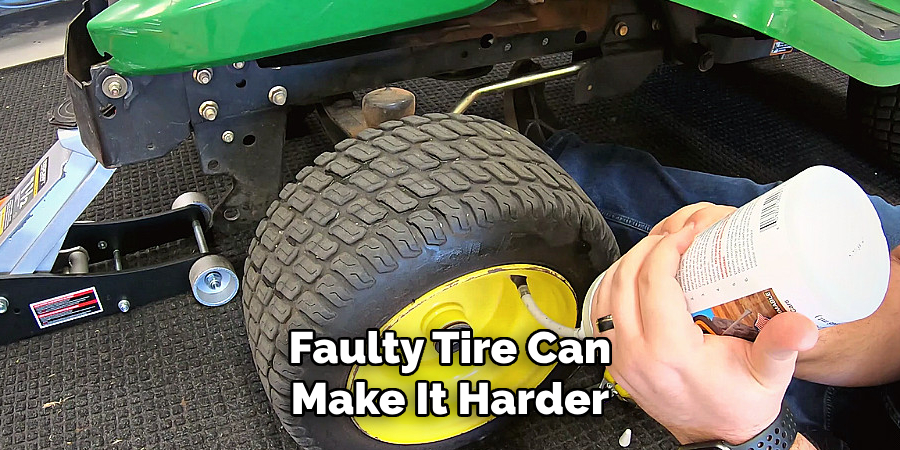
By staying vigilant and addressing these warning signs promptly, you can ensure your lawn mower remains in top working condition.
10 Methods How to Fix Lawn Mower Tire
1. Diagnose the Problem
Before attempting any repairs, the first step in fixing a lawn mower tire is to diagnose the problem accurately. Begin by visually inspecting the tire for signs of damage. Check for punctures, cracks, and worn-out tread. Flat tires often result from punctures, while cracks could indicate aging or excessive wear. If the tire is low on air but doesn’t show any external damage, it might just need to be reinflated. Understanding the extent of the damage will guide your repair approach, whether it’s a simple air refill or a more involved repair like patching a puncture.
2. Reinflate the Tire
One of the simplest fixes for a flat lawn mower tire is reinflating it. If the tire is simply low on air, using an air compressor or hand pump to inflate the tire to the proper pressure can be all that’s needed. Refer to the manufacturer’s specifications on the sidewall of the tire for the correct PSI (pounds per square inch). Over-inflating or under-inflating a tire can lead to further damage or improper handling of the mower, so ensure you achieve the proper air pressure. If the tire stays inflated after this procedure, it means the issue was simply low air pressure, and no further repairs are needed.
3. Check for Leaks Using Soapy Water
If the tire loses air again after reinflating, it’s likely that there is a puncture or slow leak. To locate the leak, mix a solution of soapy water and apply it to the surface of the tire, including the valve stem. If bubbles form, this indicates a leak. Pay special attention to areas near the tread, sidewalls, and the valve. For small punctures, you may be able to repair the tire without removing it from the mower, but larger or more serious leaks may require a more thorough repair approach.
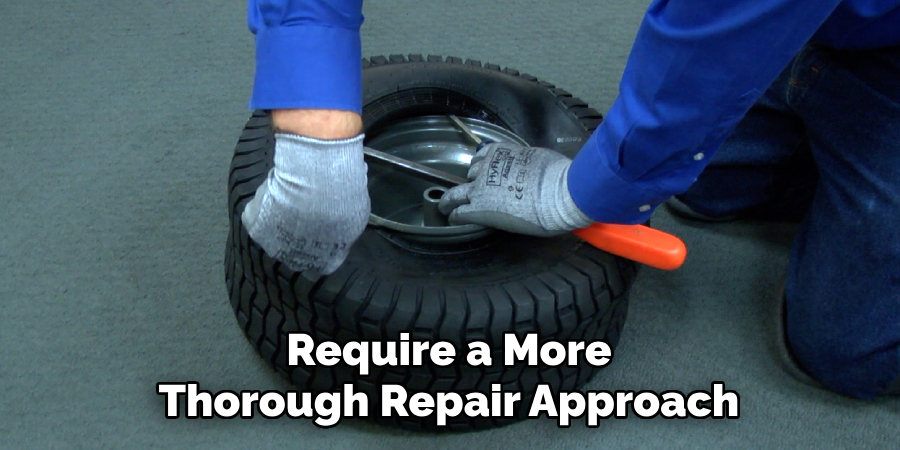
4. Patch Small Punctures
If you identify a small puncture, you can patch the tire yourself. Begin by deflating the tire completely to prevent further air loss during the repair process. Clean the area around the puncture to remove any dirt, debris, or moisture. Using a tire repair kit, apply a rubber patch over the hole, following the kit’s instructions. Most kits come with a patch and adhesive designed for use on rubber surfaces. After applying the patch, re-inflate the tire to the correct pressure and check for air leaks. This method is effective for small punctures and can save you the hassle and expense of a full tire replacement.
5. Use a Tire Sealant
If you find it difficult to locate the puncture or it’s too small to patch effectively, using a tire sealant might be a good option. Tire sealants are available in spray cans and are designed to seal small punctures automatically. Simply remove the valve stem and insert the nozzle of the tire sealant into the valve. Follow the instructions on the can, which typically involve spraying the sealant into the tire while rotating the wheel to evenly distribute the product. Tire sealants can be an excellent temporary solution to fix small leaks and get your lawn mower up and running quickly.
6. Check and Replace the Valve Stem
If the valve stem is the cause of the flat tire (often due to cracks or damage), replacing it can be a simple fix. Start by deflating the tire completely. Use a valve stem tool to remove the old valve stem from the tire, being careful not to damage the rim in the process. Once the old valve stem is removed, install a new one by inserting it into the hole on the rim and securing it in place. After the new valve stem is installed, re-inflate the tire to the proper PSI and check for leaks. Replacing a faulty valve stem is a quick and inexpensive way to fix a flat tire.
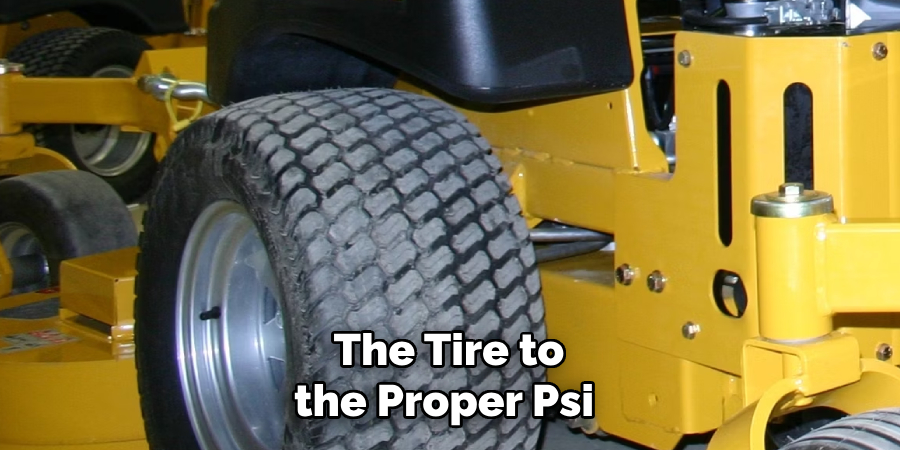
7. Inspect the Tire for Cracks or Dry Rot
If your lawn mower tire is older and has visible cracks or signs of dry rot, it may no longer be safe or functional to repair. Cracked or dry-rotted tires can lead to further tire failure and reduced traction while mowing. Inspect the entire surface of the tire for cracks, particularly along the sidewalls. If the tire shows significant signs of aging, it’s time to replace it entirely. While minor cracking can sometimes be repaired, tires with deep cracks or severe dry rot will need to be replaced to ensure the safety and performance of the mower.
8. Replace a Completely Worn Tire
If your lawn mower tire is severely worn down and no longer provides sufficient traction or support, replacing it is necessary. Start by lifting the mower and securely supporting it on a stable surface. Use a wrench to remove the bolts or fasteners holding the tire in place. Once the old tire is removed, ensure that the new tire is the correct size and type for your mower. Install the new tire, securing it with the appropriate fasteners, and check the alignment. After replacing the tire, reinflate it to the correct PSI and test the mower to ensure everything is functioning as expected.
9. Reinforce with Tire Plugs
For larger punctures or holes that are too large to patch effectively, a tire plug can offer a durable solution. Tire plugs are designed to seal bigger punctures by inserting a rubber plug into the hole. To use a plug, first deflate the tire completely and clean the puncture site. Use a reaming tool from a tire plug kit to widen the hole slightly, allowing the plug to fit tightly. Insert the plug into the hole using the insertion tool and trim any excess plug material once it is in place. Re-inflate the tire and check for leaks. This method is particularly useful for tires with larger punctures that can’t be patched easily.
10. Ensure Proper Tire Maintenance
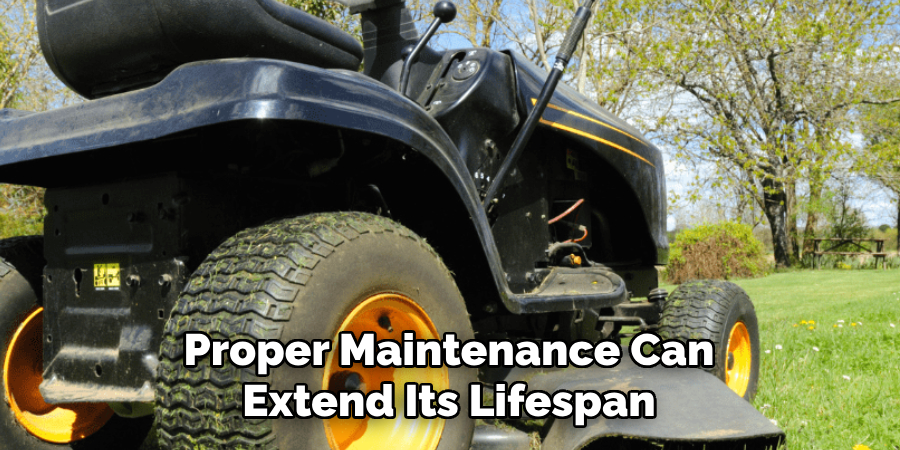
Once your lawn mower tire is repaired or replaced, proper maintenance can extend its lifespan and prevent future issues. Regularly check the tire pressure to ensure it is within the manufacturer’s recommended range. Over-inflating or under-inflating a tire can lead to premature wear and tear. Additionally, inspect the tires periodically for cracks, punctures, or any signs of damage. Keeping the mower clean and storing it in a dry location can also help preserve the tires by preventing moisture damage and dry rot.
Conclusion
Fixing a lawn mower tire is a relatively simple task that can be accomplished using various methods depending on the nature of the problem. Whether you’re dealing with a slow leak, a puncture, or excessive wear, there are several ways to address the issue without having to replace the entire tire. From patching small holes to using tire sealant or plugs, most issues can be fixed with a little effort and the right tools. Thanks for reading our blog post on how to fix lawn mower tire! We hope you found it helpful and informative.
